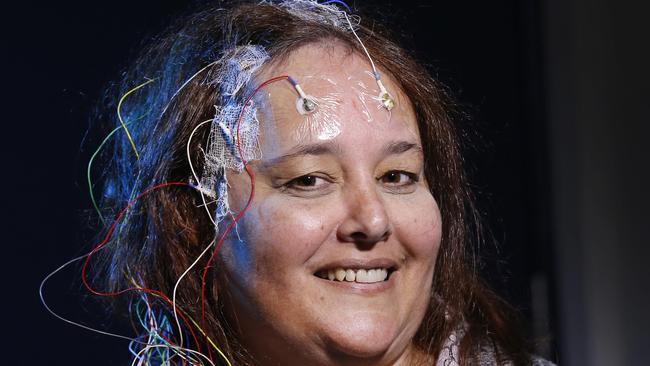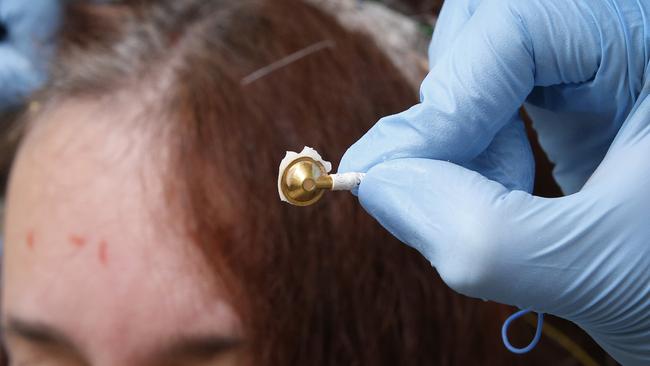World-first brain stimulation trial for Lennox-Gastaut syndrome sufferers
A WORLD-first trial will deliver electrical pulses to the “master control centre” in the brain, aiming to halt seizures and restore clear thinking in those whose severe epilepsy doesn’t respond to treatment.

VIC News
Don't miss out on the headlines from VIC News. Followed categories will be added to My News.
A WORLD-first trial will deliver electrical pulses to the “master control centre” in the brain, aiming to halt seizures and restore clear thinking in those whose severe epilepsy doesn’t respond to treatment.
Victorians with Lennox-Gastaut syndrome, an aggressive type of daily epilepsy that typically appears in childhood and causes learning difficulties, are the first to be enrolled in the Deep Brain Stimulation trial led by Austin Health and the University of Melbourne.
Medication or surgery don’t work for a quarter of epilepsy patients, and the syndrome also causes “drop attacks”.
These are seizures that send them randomly crashing to the ground or through walls, resulting in broken bones, fractured skulls and chipped teeth.
Austin neurologist and lead investigator Dr John Archer said this syndrome had a “double whammy” of damage injuries and anxiety from seizures, but it also hijacked the brain’s “thinking” networks to disrupt learning processes.

COULD THIS BE NEXT BLOCKBUSTER DRUG?
ALZHEIMER’S BREAKTHROUGH OFFERS HOPE
“The major cognitive functions like attention are not located in one spot in the brain, but across a number of key nodes in the network,” he said.
“When epilepsy gets into these, it’s a fundamental disruption to the brain.
“This led to the idea what’s needed is a treatment that tackles the network of the brain.”
Similar to deep brain stimulation to treat the tremors and stiffness of Parkinson’s disease, the trial will involve placing a pair of electrodes in the brain, connected by internal wires to a pacemaker box on the chest.
The stimulation target is the thalamus, the “Flinders St railway station of the brain” as the relay station for electrical signalling controlling sensory and motor tasks.
The double-blinded study, backed by a $1 million grant from the National Health and Medical Research Council, will see 20 patients implanted in the next 18 months.
“My biggest hope is we can prove this significantly reduces seizures,” Dr Archer said.
“If we can also show there is improvement in cognitive function, it would be a bonus.”
Janina Freestone, 48, will be one of the first to take part.
Her seizures started at three, and she has trialled various medications and had a different brain stimulation therapy targeting with limited success in controlling the drop attacks and absent seizures she experiences multiple times each day.
“I have no independence — I can’t drive, I can’t leave the house on my own,” Ms Freestone said.
“I’m hoping for a better life. I feel like I’m in cotton wool and I just want to get out.”
Details: estel-study@unimelb.edu.au


